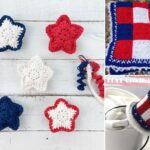Mauve color is a pale purple shade that sits between violet and red. The color gets its name from the French word “mauve,” which means “mallow,” a type of flower with pale purple petals. Mauve color is a shade with unique properties, tones, and pigments. The soft light shade also features gray and blue tones.
What Color Is Mauve?
Mauve color is a shade in the spectrum between purple and pink. It often appears as a grayish violet or a muted, purplish pink. Mauve is a blend of pigments that combine both red and blue undertones.
It often has a higher proportion of red than blue, making the color warmer than other shades of purple. The shade also contains gray, contributing to its lighter shade and subdued appearance.
A wide range of synthetic dyes and pigments create vibrant mauve shades. Mauve may appear purple or pink depending on the surrounding colors and lighting conditions.
Historical Significance and Symbolism of Mauve
Chemist Sir William Henry Perkin discovered the mauve color during the mid-19th century. It was the first synthetic colorant in the world of dyes to be produced on a mass scale. The color’s aesthetic appeal in art represents femininity, delicate beauty, and romance.
Mauve is often associated with feelings of purity, devotion, and renewal. Its symbolism extends to social movements such as the LGBTQ+ community, symbolizing non-conformity and pride.
Mauve in Color Science
Color theory helps determine shades that pair with mauve to achieve a specific visual effect. Mauve is unique in its properties, position on the color spectrum, and relationship with other colors.
Color Properties of Mauve
Mauve appears as pale, grayish violet, or a muted purplish pink. The combination of pigments and dyes often influences mauve’s saturation, hue, and brightness. These properties help discern the subtle differences between various shades of mauve.
Mauve’s Position in the Color Spectrum
The color spectrum comprises a wide range of colors, each occupying a specific position. Mauve sites between purple and pink, inclining more towards the purple side. It sits where the light wavelengths match its characteristic hue.
Mauve’s Relation to Other Colors
Mauve creates relationships with neighboring colors on the wheel via color harmony and contrast. A yellowish-green hue, for instance, is mauve’s complementary color since it’s on the opposite side of the color wheel.
Properties and Composition of Mauve
Mauve color has a distinct composition and properties that achieve different shades and tones.
Mauve as a Subtractive Color
Mauve is a subtractive color that absorbs specific wavelengths of light while reflecting others. Subtractive colors often have dyes or pigments that absorb (subtract) light from the white light spectrum.
Dyes or pigments in mauve’s composition absorb green and yellow light wavelengths. They reflect violet and pink hues, resulting in the characteristic mauve color.
Relationship Between RGB and CMYK Color Models
The relationship between the RGB and CMYK primary color models helps understand mauve’s composition. Mixing red, blue, and a lesser proportion of green in the RGB model creates
mauve. In the CMYK model, mauve combines cyan, magenta, and tiny amounts of yellow and black.
Pigments and Dyes Used to Create Mauve
Natural or synthetic pigments and dyes create the mauve color. In its early stages, mauve was extracted from coal tar using chemicals such as aniline.
Synthetic dyes from aniline played a role in the mass production of mauve. Natural sources, including plant-based pigments such as madder root, also help create variations of mauve.
Achieving Different Shades and Tones of Mauve
Adjusting the proportions of pigments or dyes and alternating the saturation levels helps achieve a range of mauve variations. Different amounts of white and black also influence the shades and tones of mauve. Lightening mauve achieves pastel shades while deepening produces richer, darker tones.
Mauve in Color Schemes and Combinations
Mauve lends itself to various color schemes and combinations.
1. Complementary Colors to Mauve
Complementary colors sit opposite each other on the color wheel. Mauve achieves a vibrant contrast when paired with a complementary color.
It creates an interplay of warm and cool tones, enhancing the desired visual impact. On the color wheel, mauve’s complement lies on the yellowish-green side.
| Shade | Hex Code | CMYK Color Code (%) | RGB Color Code |
|---|---|---|---|
| Mauve | #E0B0FF | 12, 31, 0, 0 | 224, 176, 255 |
| Yellowish-Green | #DFFF90 | 13, 0, 44, 0 | 223, 255, 144 |
2. Analogous Colors to Mauve
Analogous colors are adjacent to each other on the color wheel. Mauve creates harmony and cohesion when paired with analogous colors. The standard analogous colors to pink are variations of violet and pink.
| Shade | Hex Code | CMYK Color Code (%) | RGB Color Code |
|---|---|---|---|
| Lavender Blue | #BFB9FF | 25, 27, 0, 0 | 191, 185, 255 |
| Mauve | #E0B0FF | 12, 31, 0, 0 | 224, 176, 255 |
| Lavender Rose | #FAA8EA | 0, 33, 6, 2 | 250, 168, 234 |
3. Triadic Colors With Mauve
Triadic color schemes comprise three colors that are evenly spaced out on the color wheel. The triadic colors of mauve are shades of green and orange. The combination creates a diverse palette that allows for contrast and harmony in a design.
| Shade | Hex Code | CMYK Color Code (%) | RGB Color Code |
|---|---|---|---|
| Mauve | #E0B0FF | 12, 31, 0, 0 | 224, 176, 255 |
| Light Orange | #FFE080 | 0, 12, 50, 0 | 255, 224, 128 |
| Magic Mint | #B0FFE0 | 31, 0, 12, 0 | 176, 255, 224 |
4. Monochromatic Variations of Mauve
Monochromatic color schemes are variations of a single color. Different shades, tints, and tones of mauve appear when it’s a central hue in a monochromatic color scheme.
| Shade | Hex Code | CMYK Color Code (%) | RGB Color Code |
|---|---|---|---|
| Mauve | #E0B0FF | 12, 31, 0, 0 | 224, 176, 255 |
| Light Violet | #CC7DFF | 20, 51, 0, 0 | 204, 125, 255 |
| Electric Purple | #B84AFF | 27, 71, 0, 0 | 184, 74, 255 |
5. Tetradic Color Schemes With Mauve
Tetradic color schemes comprise four evenly spaced colors on the color wheel. Mauve interacts with its complementary hues and adjacent colors. The result appears balanced and creates a stimulating, versatile color palette.
| Shade | Hex Code | CMYK Color Code (%) | RGB Color Code |
|---|---|---|---|
| Mauve | #E0B0FF | 12, 31, 0, 0 | 224, 176, 255 |
| Pale Red | #FFB9B0 | 0, 27, 30, 0 | 255, 185, 176 |
| Tea Green | #CFFFB0 | 19, 0, 31, 0 | 207, 255, 176 |
| Pale Turquoise | #B0F6FF | 31, 3.5, 0. 0 | 176, 246, 255 |
Applications and Uses of Mauve
Mauve is typical in various applications and uses, including art and design, fashion, and beauty.
- Color Symbolism: Mauve is often associated with spirituality, individuality, and creativity. Artists use mauve to evoke a sense of ethereal beauty, introspection, and mystery.
- Complementary colors: Mauve complements pale yellows, greens, and blues, creating balanced compositions.
- Backgrounds and accents: Mauve is a perfect backdrop or accent color in graphic design, paintings, and illustrations.
- Expressionist art: Mauve’s subdued and calming nature conveys emotions and different atmospheres in expressionist art forms.
- Clothing and accessories: Mauve-colored clothing items and accessories offer an elegant look and a subtle touch of color to an outfit.
- Wall paint and wallpaper: Mauve paints and wallpaper designs add visual interest to various interior spaces.
- Accent pieces: Mauve contributes to a cohesive interior design scheme as an accent color for furniture pieces.




